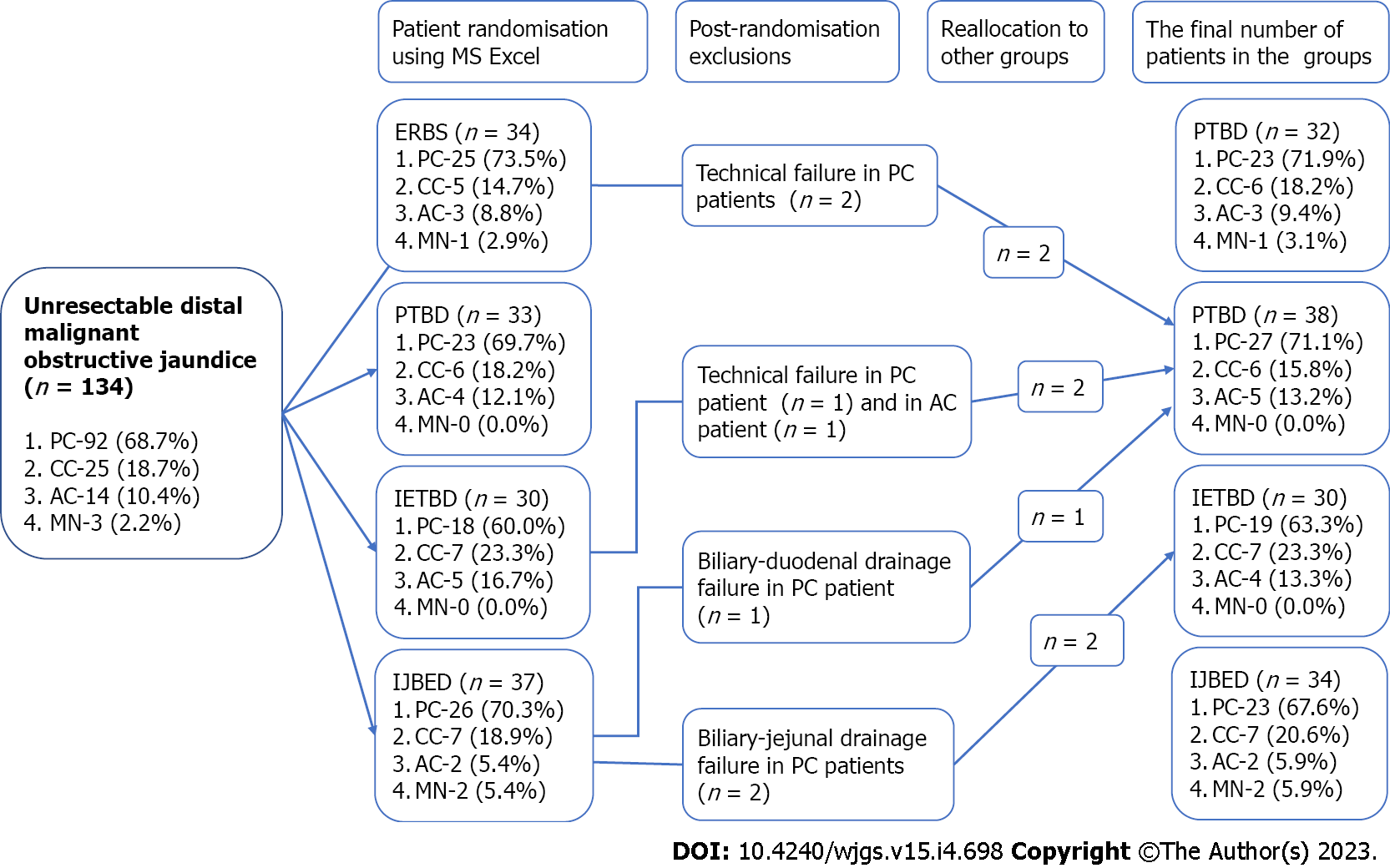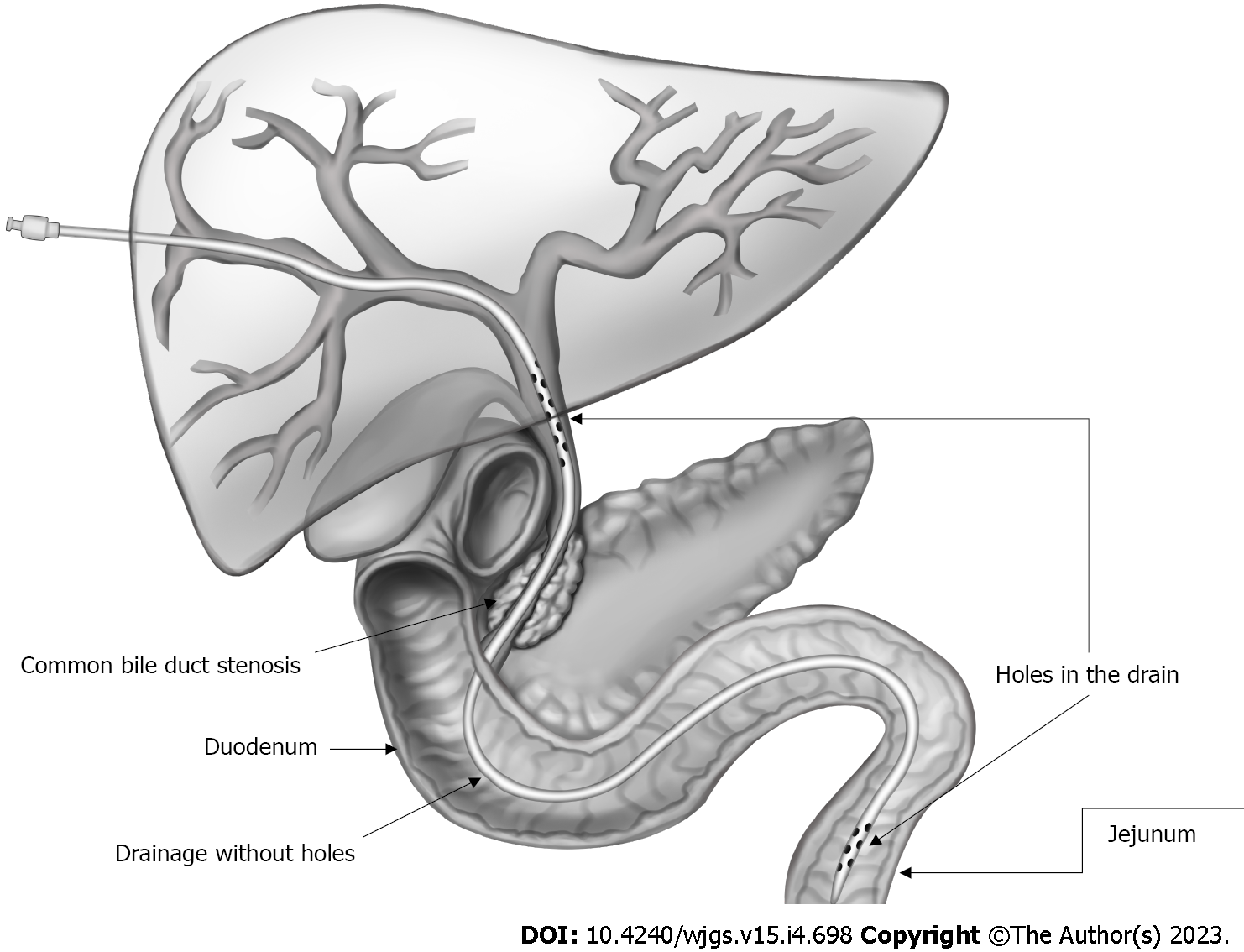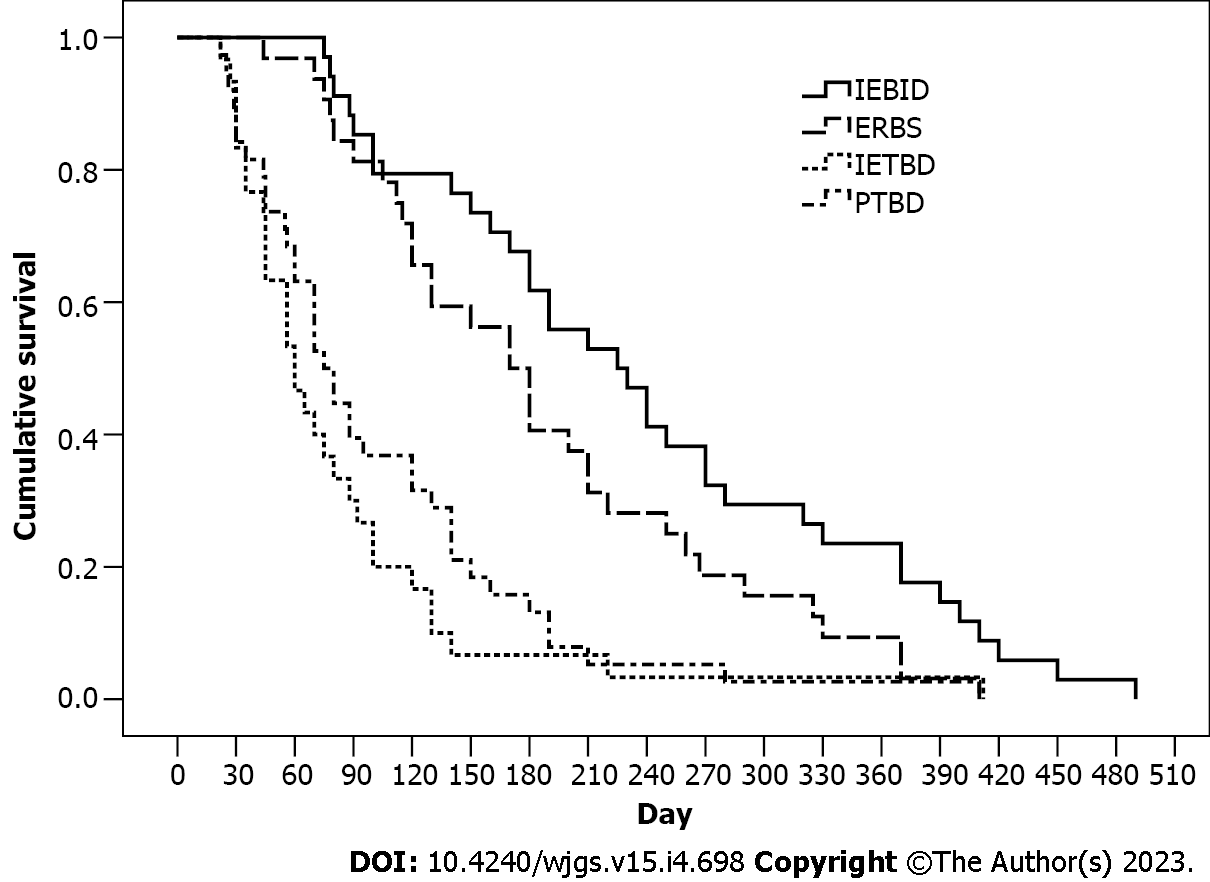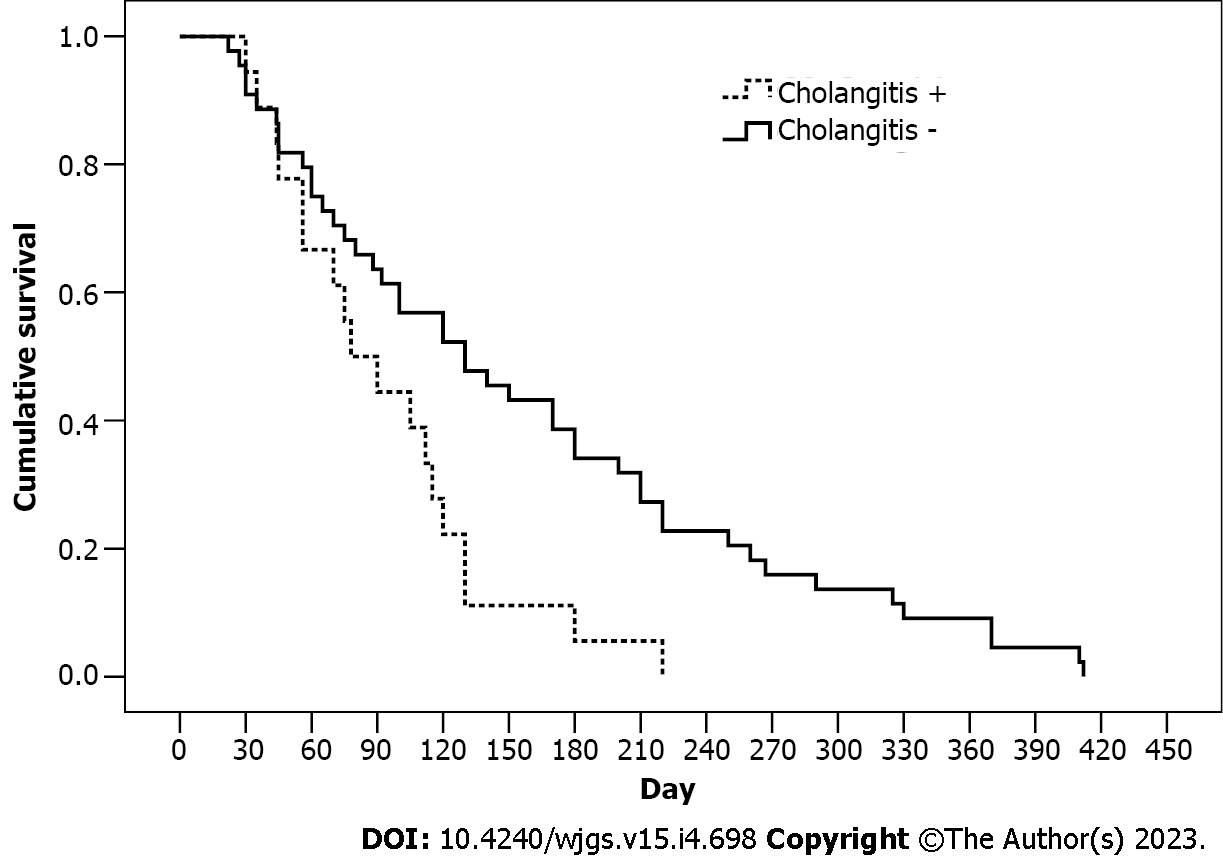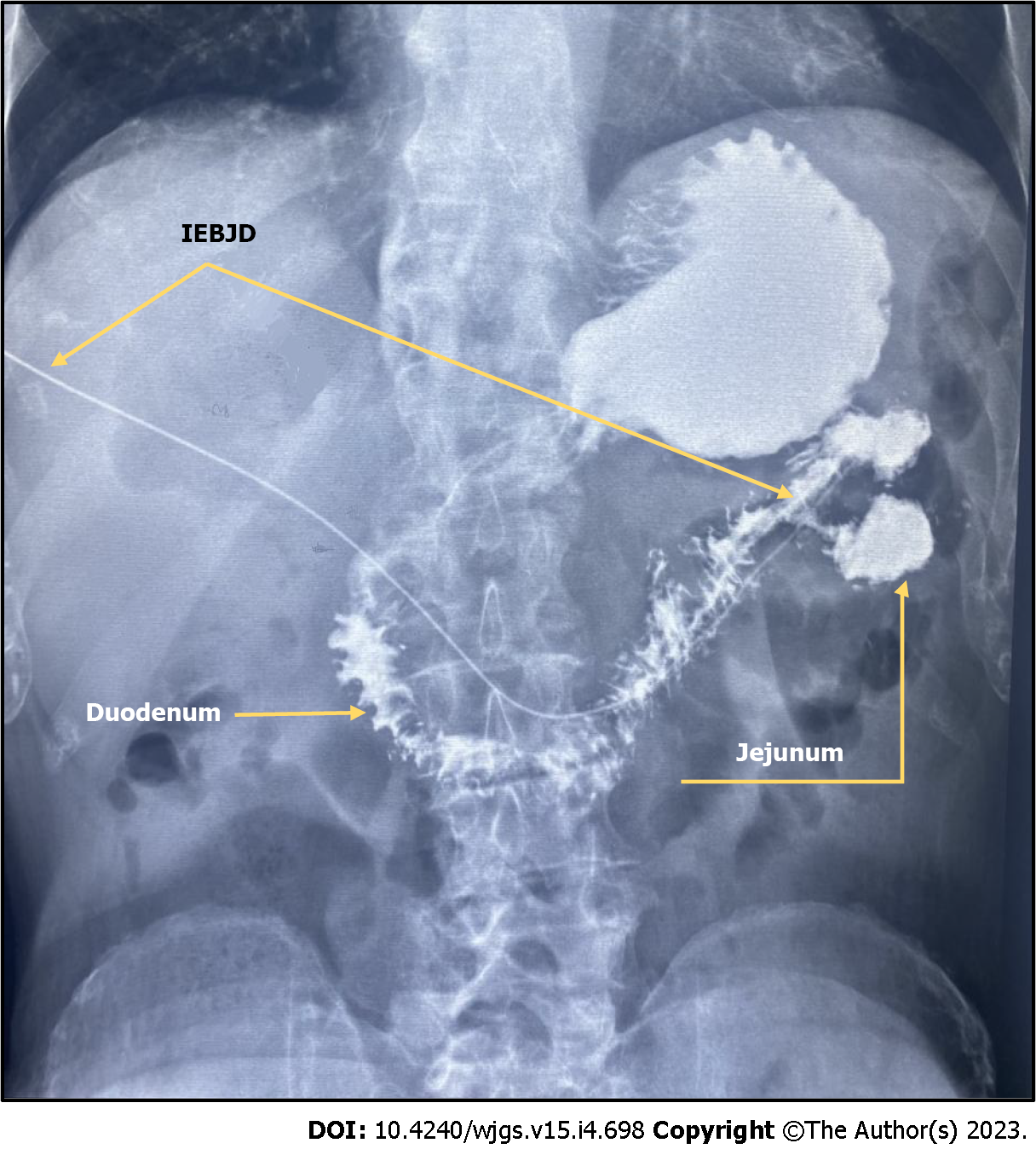Copyright
©The Author(s) 2023.
World J Gastrointest Surg. Apr 27, 2023; 15(4): 698-711
Published online Apr 27, 2023. doi: 10.4240/wjgs.v15.i4.698
Published online Apr 27, 2023. doi: 10.4240/wjgs.v15.i4.698
Figure 1 Patient randomization based on the bile duct decompression techniques used in the study.
AC: Ampullary cancer; CC: Cholangiocarcinoma; ERBS: Endoscopic retrograde biliary stenting; IETBD: Internal-external transpapillary biliary drainage; IJBED: Internal-external biliary-jejunal drainage; MN: Metastatic nodes; PC: Pancreatic cancer; PTBD: Percutaneous transhepatic biliary drainage.
Figure 2
Layout of external-internal biliary-jejunal drainage placement.
Figure 3 Kaplan-Meier cumulative survival curves for patients with distal malignant biliary obstruction who underwent various minimally invasive palliative procedures.
Patients with internal-external biliary-jejunal drainage had a higher survival rate than the other groups (P < 0.05). DMBO: Distal malignant biliary obstruction; ERBS: Endoscopic retrograde biliary stenting; IEBJD: Internal-external biliary-jejunal drainage; IETBD: Internal-external transpapillary biliary drainage; PTBD: Percutaneous transhepatic biliary drainage.
Figure 4 Kaplan-Meier cumulative survival curves for patients with internal-external transpapillary biliary drainage and endoscopic retrograde biliary stenting depending on the presence of cholangitis episodes.
Patients with cholangitis had a lower survival rate compared to those without (P < 0.05). ERBS: Endoscopic retrograde biliary stenting; IETBD: Internal-external transpapillary biliary drainage.
Figure 5 Barium X-ray examination of the stomach and duodenum in a patient 3 mo after external-internal biliary-jejunal drainage for pancreatic head cancer.
Contrast reflux in the bile duct is absent. IEBJD: Internal-external biliary-jejunal drainage.
- Citation: Susak YM, Markulan LL, Lobanov SM, Palitsya RY, Rudyk MP, Skivka LM. Effectiveness of a new approach to minimally invasive surgery in palliative treatment of patients with distal malignant biliary obstruction. World J Gastrointest Surg 2023; 15(4): 698-711
- URL: https://www.wjgnet.com/1948-9366/full/v15/i4/698.htm
- DOI: https://dx.doi.org/10.4240/wjgs.v15.i4.698









